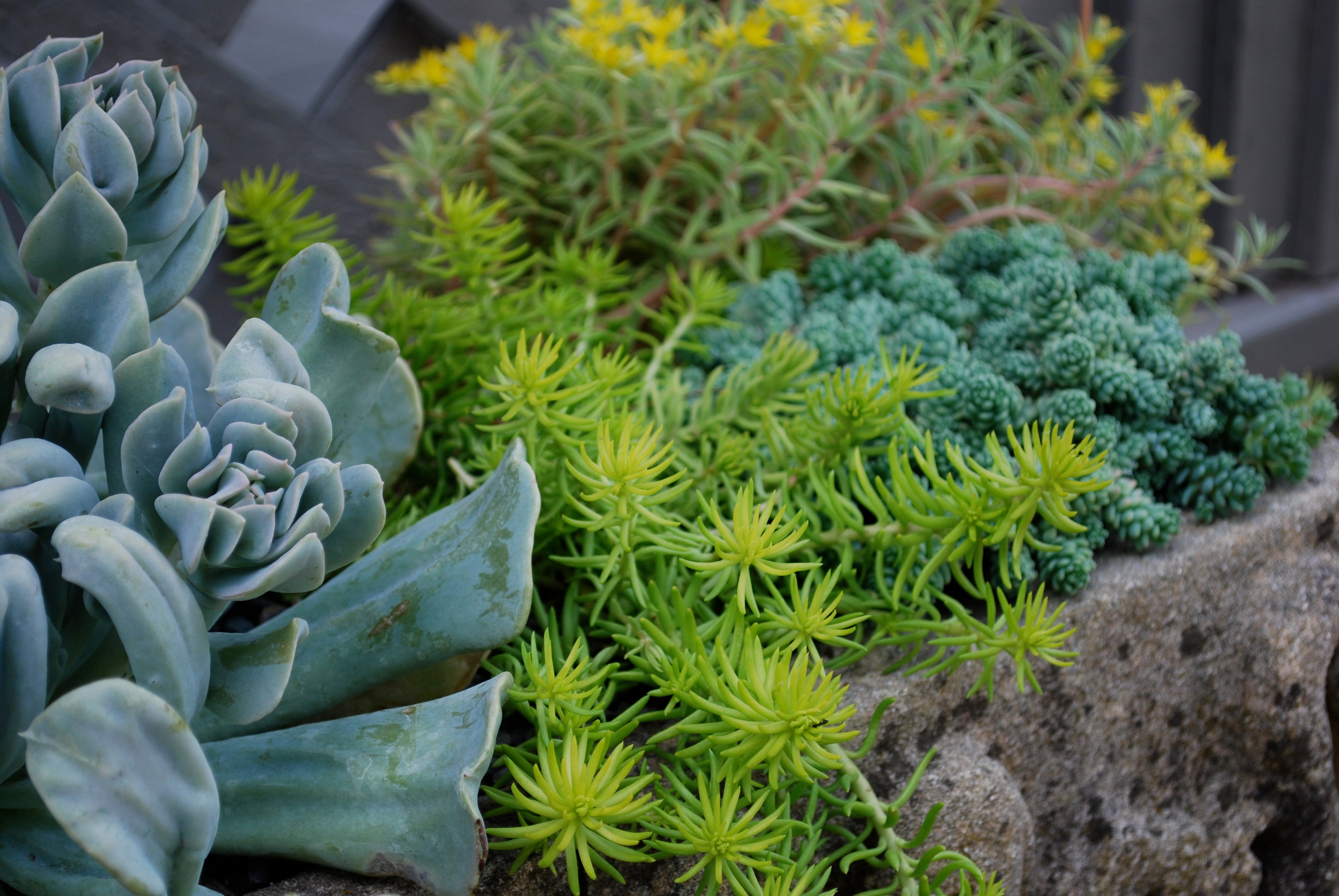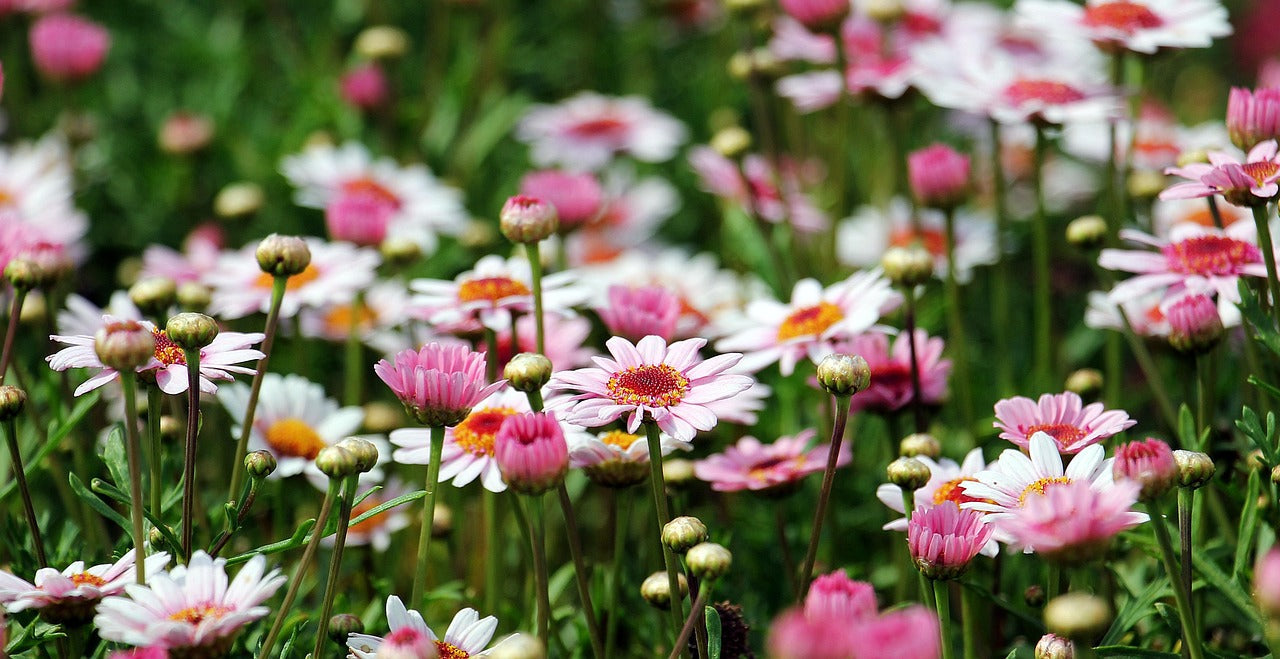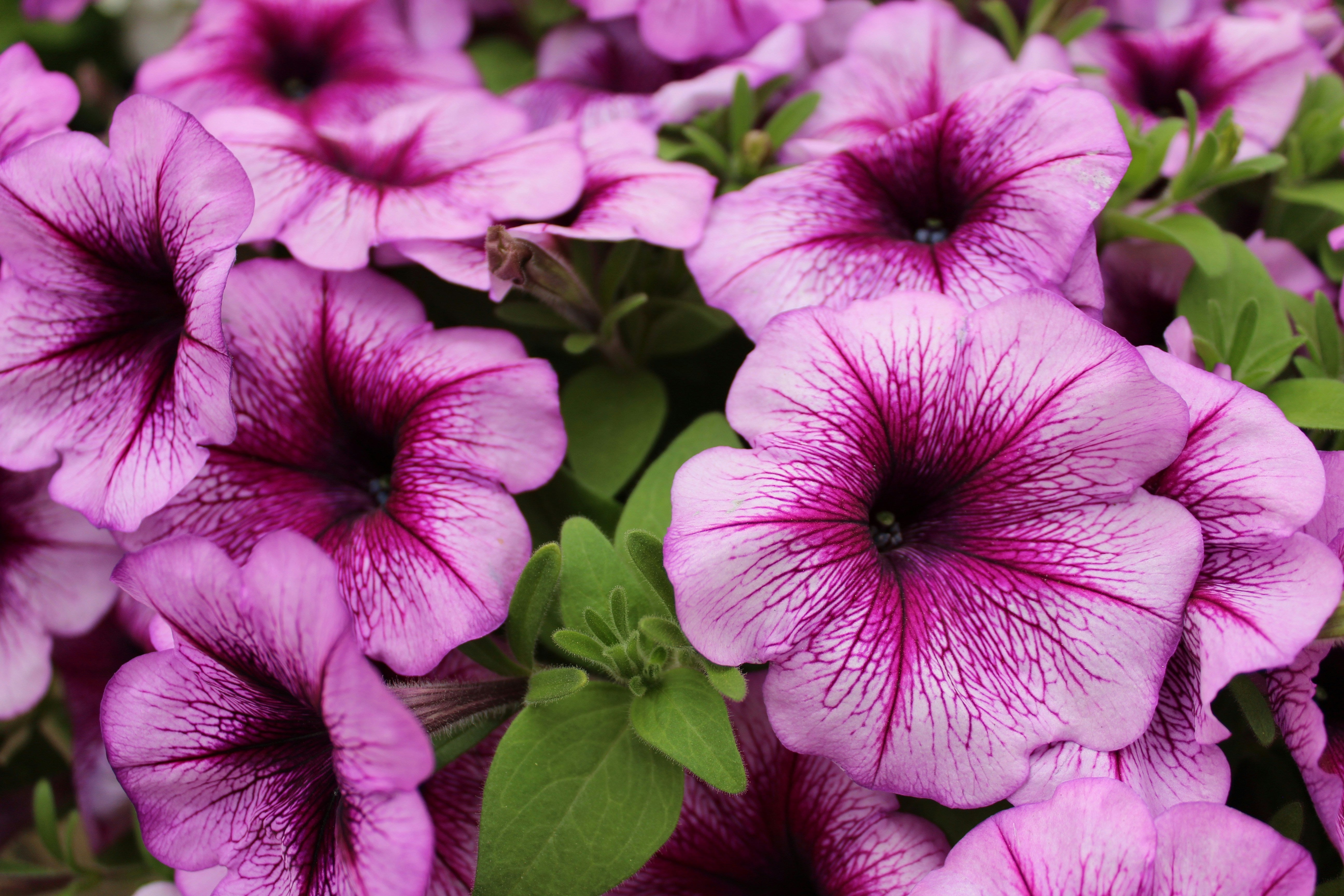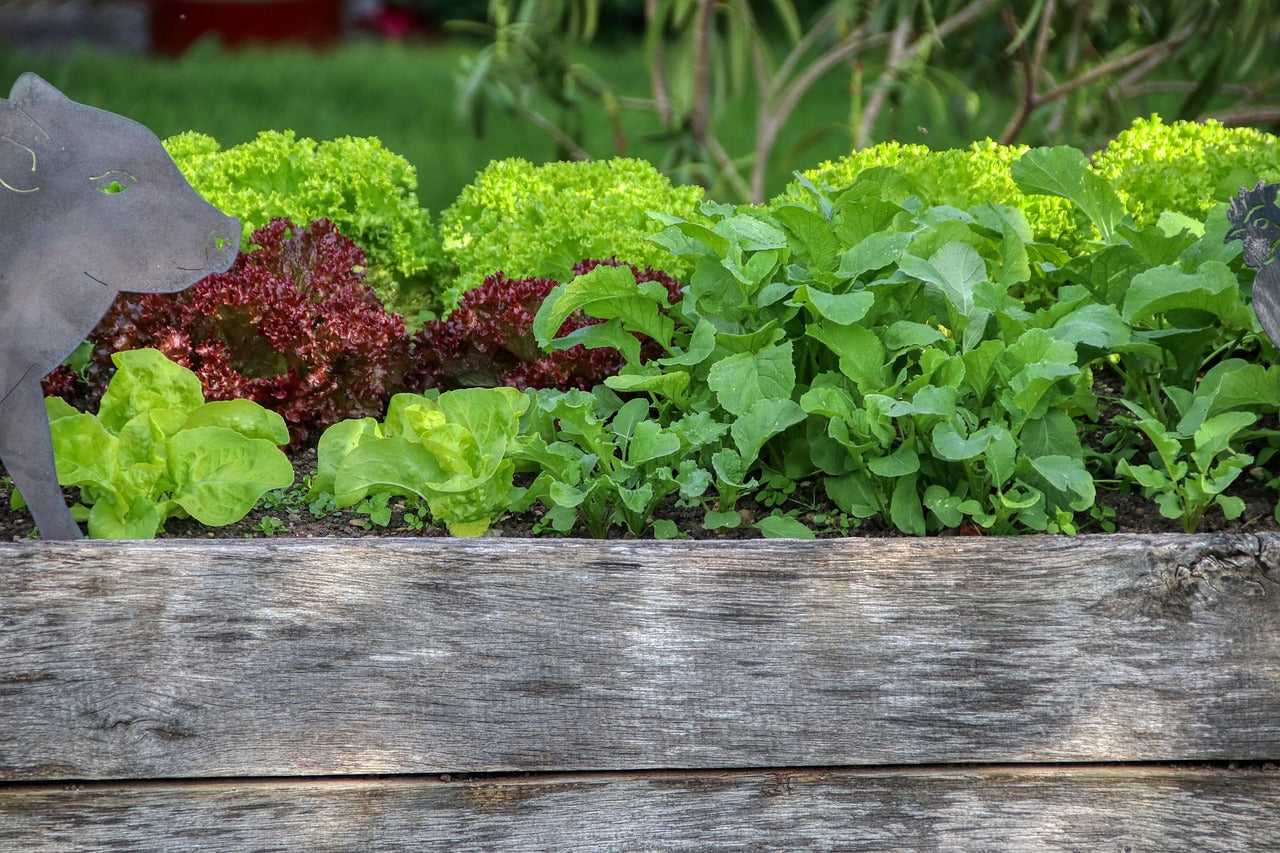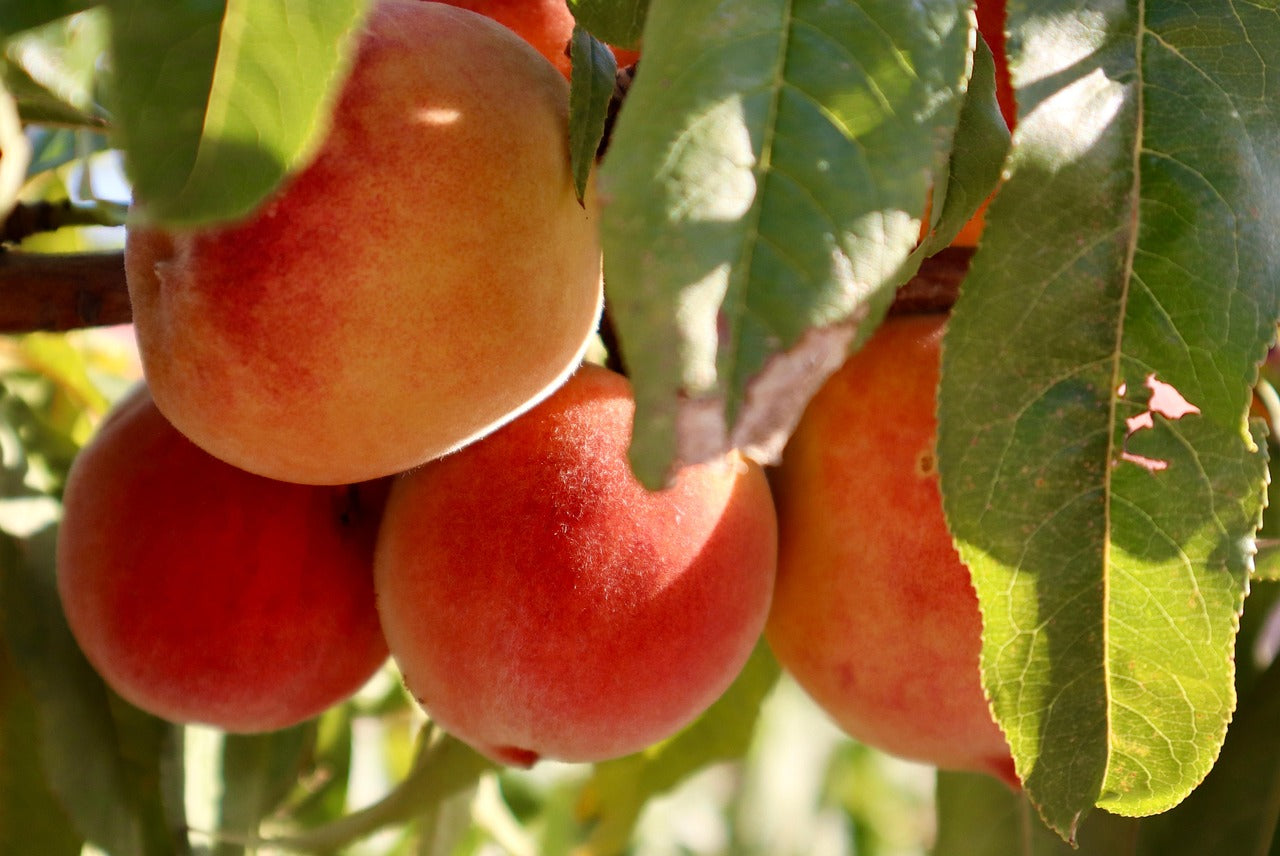Cacti and succulents are great easy care, low maintenance plants. Cacti and succulents are undemanding plants to grow. Providing form, colour and texture, they add interest to difficult-to-fill hot, dry, sunny places in the garden. They are great easy care, low maintenance plants for patio pots and tubs, and are especially good for coastal gardens, as accent plants, or as ground cover. Cacti and succulents are able to store water during wet periods and then draw on it in periods of drought. There are two main types – those that store water in their leaves and those that store water in their stems. Cacti are the largest family of succulents and store water in their stems. Succulents have thick fleshy leaves that store water. Some are coated in a waxy substance to reduce water loss and others are covered in spines to protect them from intense sunlight and drying winds, as well as browsing animals.
To be successful, succulents require good drainage and at least half a day of direct sun. Add fine gravel, sand or pumice to the soil before planting to improve drainage. Peat or compost does not need to be added to the soil before planting as succulents are prone to root disorders if the soil retains too much moisture. Most require protection from temperatures below 5 degrees Celsius – sempervivums and sedums are the hardiest and most cold tolerant succulents. In areas with heavy clay soils or prone to frost, grow plants in containers. Low growing succulents are ideal ground covers and will quickly cover a bank or retaining wall. They are ideal for dry areas, under overhanging eaves or poked into retaining walls.
 If there isn’t a place in your garden for succulents, plant them in pots. Easy care, they stand a small amount of neglect and can be shifted around at whim. When planting in containers, use a quality potting mix. Because cacti and succulents require good drainage, a 50/50 mix of potting mix/fine gravel or pumice is ideal. Water container grown plants once a week in spring and summer depending upon the weather, and intermittently in winter. In very cold, wet weather move pots to a more sheltered place to prevent root rot setting in. Re-pot succulents in late winter/early spring. Avoid re-potting when in bud or flower. Wait until flowering has finished before re-potting. Allow the mix to dry out before re-potting. This will allow the roots to come away from the sides of the pot easily. Loosen the roots by tapping the pot or push a pencil through the hole in the base. When re-potting cacti, use thorn resistant gloves or a sheet of folded newspaper to hold the plant. Gently shake off loose potting mix, taking care not to disturb the roots too much. Plant into a pot one size up from the original pot. Large plants seldom need re-potting, but will need a side-dressing of Acticote each spring.
If there isn’t a place in your garden for succulents, plant them in pots. Easy care, they stand a small amount of neglect and can be shifted around at whim. When planting in containers, use a quality potting mix. Because cacti and succulents require good drainage, a 50/50 mix of potting mix/fine gravel or pumice is ideal. Water container grown plants once a week in spring and summer depending upon the weather, and intermittently in winter. In very cold, wet weather move pots to a more sheltered place to prevent root rot setting in. Re-pot succulents in late winter/early spring. Avoid re-potting when in bud or flower. Wait until flowering has finished before re-potting. Allow the mix to dry out before re-potting. This will allow the roots to come away from the sides of the pot easily. Loosen the roots by tapping the pot or push a pencil through the hole in the base. When re-potting cacti, use thorn resistant gloves or a sheet of folded newspaper to hold the plant. Gently shake off loose potting mix, taking care not to disturb the roots too much. Plant into a pot one size up from the original pot. Large plants seldom need re-potting, but will need a side-dressing of Acticote each spring.
 Where to plant
Where to plant
To be successful, succulents require good drainage and at least half a day of direct sun. Add fine gravel, sand or pumice to the soil before planting to improve drainage. Peat or compost does not need to be added to the soil before planting as succulents are prone to root disorders if the soil retains too much moisture. Most require protection from temperatures below 5 degrees Celsius – sempervivums and sedums are the hardiest and most cold tolerant succulents. In areas with heavy clay soils or prone to frost, grow plants in containers. Low growing succulents are ideal ground covers and will quickly cover a bank or retaining wall. They are ideal for dry areas, under overhanging eaves or poked into retaining walls.
Watering and Feeding
Water regularly, but not excessively, during summer. Cacti and succulents require a resting period in winter when they do not require watering at all. For cacti, this resting period is especially important, as, if they do not get it, they will not flower. Avoid over-feeding – these plants are not gross feeders. Apply a dressing of Acticote in spring. A weak solution of a soluble fertiliser such as Thrive Flower and Fruit applied in summer is beneficial.Mulching
Mulching is not only unnecessary, but is detrimental to succulents. For aesthetic purposes, a fine layer of gravel, crushed shell or river stones can be placed over the soil surface – this will help deter slugs and snails.Growing succulents in containers
 If there isn’t a place in your garden for succulents, plant them in pots. Easy care, they stand a small amount of neglect and can be shifted around at whim. When planting in containers, use a quality potting mix. Because cacti and succulents require good drainage, a 50/50 mix of potting mix/fine gravel or pumice is ideal. Water container grown plants once a week in spring and summer depending upon the weather, and intermittently in winter. In very cold, wet weather move pots to a more sheltered place to prevent root rot setting in. Re-pot succulents in late winter/early spring. Avoid re-potting when in bud or flower. Wait until flowering has finished before re-potting. Allow the mix to dry out before re-potting. This will allow the roots to come away from the sides of the pot easily. Loosen the roots by tapping the pot or push a pencil through the hole in the base. When re-potting cacti, use thorn resistant gloves or a sheet of folded newspaper to hold the plant. Gently shake off loose potting mix, taking care not to disturb the roots too much. Plant into a pot one size up from the original pot. Large plants seldom need re-potting, but will need a side-dressing of Acticote each spring.
If there isn’t a place in your garden for succulents, plant them in pots. Easy care, they stand a small amount of neglect and can be shifted around at whim. When planting in containers, use a quality potting mix. Because cacti and succulents require good drainage, a 50/50 mix of potting mix/fine gravel or pumice is ideal. Water container grown plants once a week in spring and summer depending upon the weather, and intermittently in winter. In very cold, wet weather move pots to a more sheltered place to prevent root rot setting in. Re-pot succulents in late winter/early spring. Avoid re-potting when in bud or flower. Wait until flowering has finished before re-potting. Allow the mix to dry out before re-potting. This will allow the roots to come away from the sides of the pot easily. Loosen the roots by tapping the pot or push a pencil through the hole in the base. When re-potting cacti, use thorn resistant gloves or a sheet of folded newspaper to hold the plant. Gently shake off loose potting mix, taking care not to disturb the roots too much. Plant into a pot one size up from the original pot. Large plants seldom need re-potting, but will need a side-dressing of Acticote each spring.
Pests and diseases
Slugs and snails love the soft juicy flesh. Control with Tui Quash. Mealy Bug appears as soft fluffy patches. Wrinkling and softening flesh with little or no growth indicates a root disorder. Reduce watering, plant into containers, or improve drainage by raising beds and mixing sand, gravel or pumice into the soil.You can view some of our favourite succulent varieties here.
This ‘How To’ Guide has been produced to provide basic information and our experienced staff are available to answer any questions that you may have. Because this guide is of a general nature, neither Palmers nor its staff are responsible for the application of the information, as the contents may need to be modified for individual projects and site applications.

